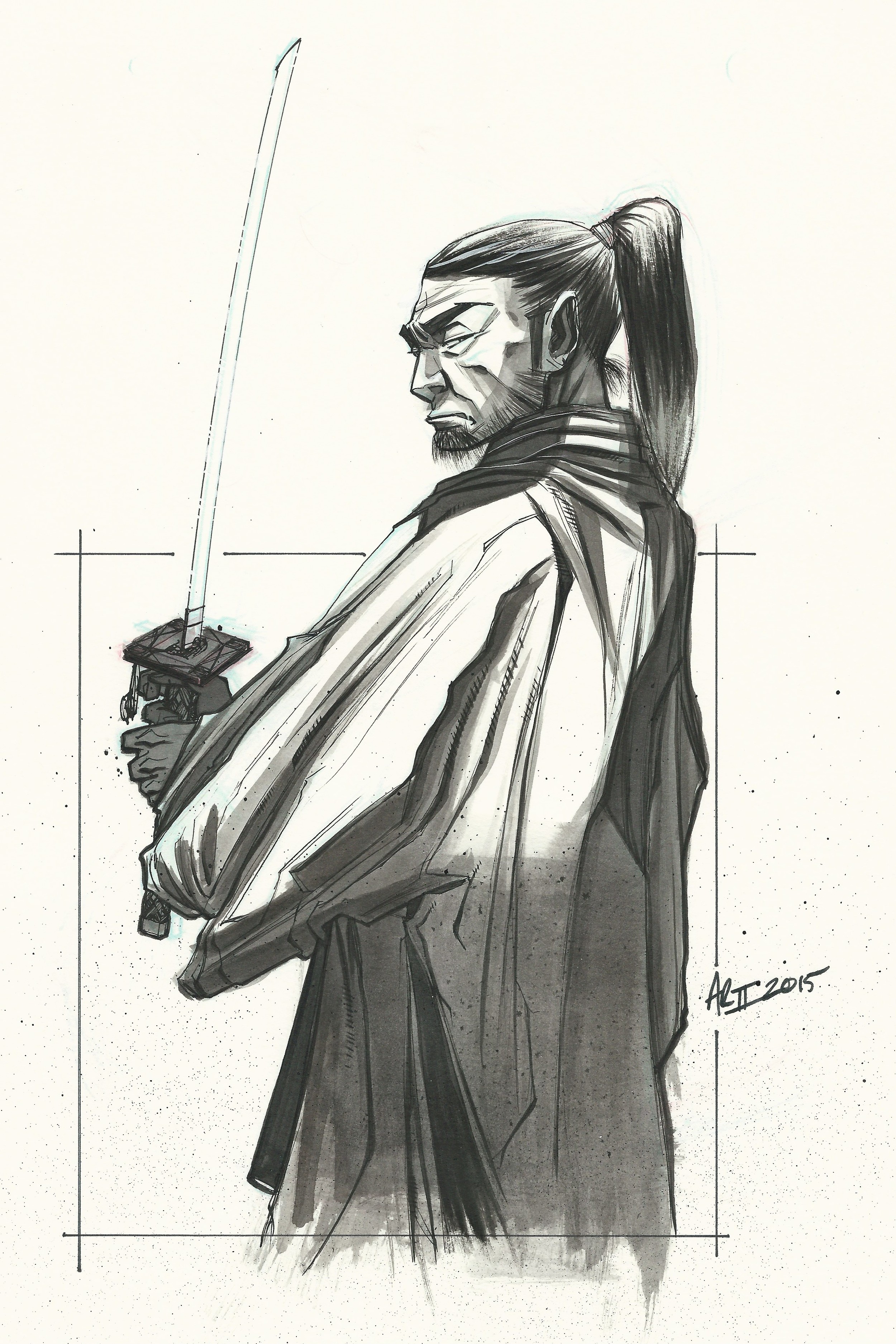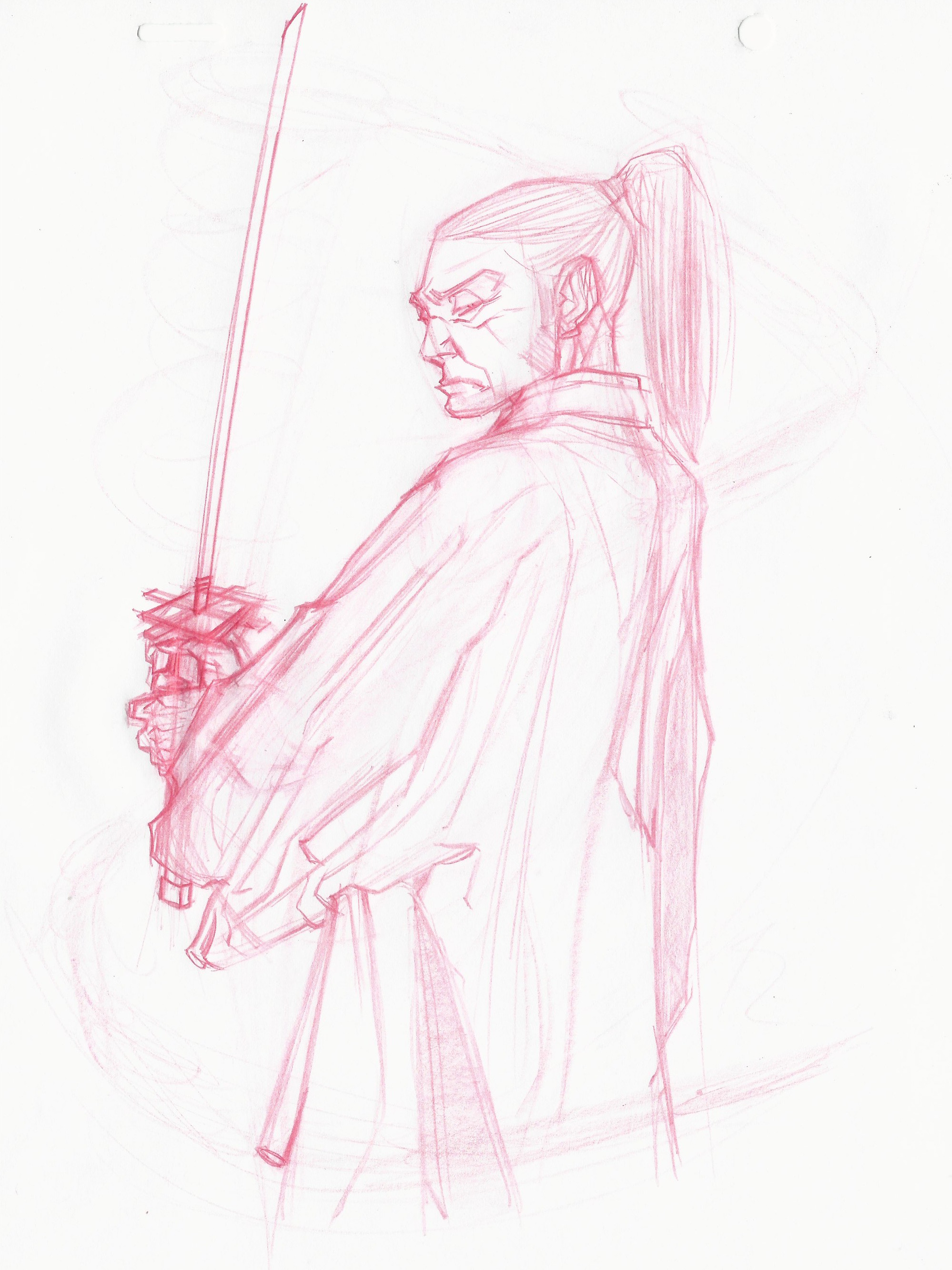There is one universal question that circles art forums. That question is: What is your process? Depending on the artist, the answer will be vastly different and unique. Some artists work traditionally while others work digitally. "Trial and error" plus personal preference are huge components when creating your step by step process. For example, I prefer to draw my comic panels and illustrations on smaller paper (8.5x11 to 10x12) and ink, traditionally, on larger bristol board (11x17).
In this post, you will see how my drawing process was influenced by my favorite artists.
While in my senior year at Savannah College of Art and Design (SCAD), I had the pleasure of meeting Ben Caldwell, LeSean Thomas and Mark Schultz. Within the Sequential Art Program, Professor John Paul Lowe taught me everything I know about inking in his Advanced Inking class.
Ben Caldwell
When I met Ben Caldwell, he was ALWAYS drawing. He carried around Manila folders filled to capacity with drawings. He didn't draw on glamorous bristol board or sketch with a super expensive pencil. He drew comic panels, comic covers, and other illustrations on plain computer paper with a mechanical pencil. A pencil that you can find at your near by Walgreens or CVS.
LeSean Thomas
During my critique with LeSean Thomas at SCAD, we spoke about storytelling and process. He dropped SO MANY gems on me that evening. Midway through the conversation, we segwayed into a discussion about drawing comics on bristol board and how frustrating it was. When he explained the importance of comfortability in your own process, it spoke to me. Without the added stress of drawing directly on bristol board, he concluded that drawing on computer paper was much more relieving.
Mark Schultz
My comic mentor Mark Schultz (Xenozoric, Cadillac and Dinosaurs, and Flash Gordon) left a huge impression on me. He is one of my main inking influences. To learn about his brush techniques, I typed numerous emails packed with questions. Whenever I got the chance to talk to him one on one, I would show him my inked sketches for him to critique. The best advice he gave me was to practice A LOT and experiment with your tools. He suggested that I:
- Try to make different textures by holding the brush far way from the ferrule
- Use the Dry Brush technique for unique textures
- Make a bold stroke with your brush, then try and make it into something by using trapping lines
Professor John Paul Lowe
Last but most certainly not least, Professor John Paul Lowe introduced me to the Fine Art of Inking. While in my last year at SCAD (Savannah), I chose to take Professor Lowe's Advanced Inking class. I heard nothing but great things about his course. With my passion for traditional inking, it was only right I register for his class. In his class, we learned about traditional and digital inking techniques. He stressed the importance of having a strong drawing before inking. Professor Lowe taught us to:
- "Draw with the ink"
- Experiment with different mediums and mix them (digital and traditional)
- Practice all of the time
All of these awesome artists influenced my drawing process.


Now, I would like to share my penciling and inking steps.
Pencil Steps:
- Draw on animation paper or computer paper with Col Erase pencils
- Sketch loose and gestural in the beginning
- Tighten up the drawing for inking
Inking Steps:
- Ink with nib for line work
- Use brush for hair, "thick and thin" lines, and feathering
- Paint with ink wash/watercolor for tones and shadows
- Overlay with white out for highlights, white lines and corrections
When creating your process, do what makes you comfortable. If you like to work digitally, do that. If you combine digital with traditional, by all means, continue those steps. There isn't a top secret method of making a beautiful drawing. The beauty is in the process.
Stay tuned for my next post!
